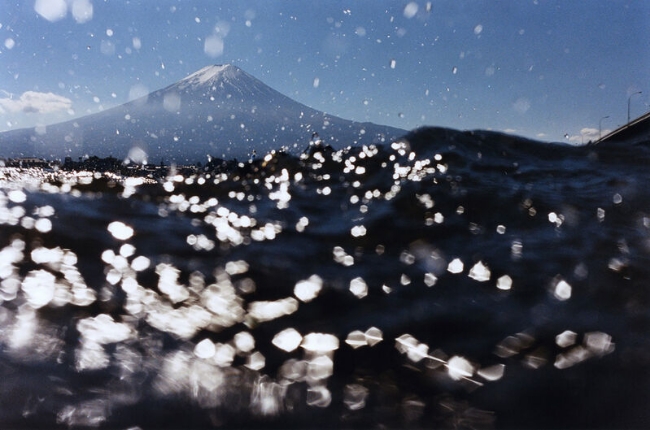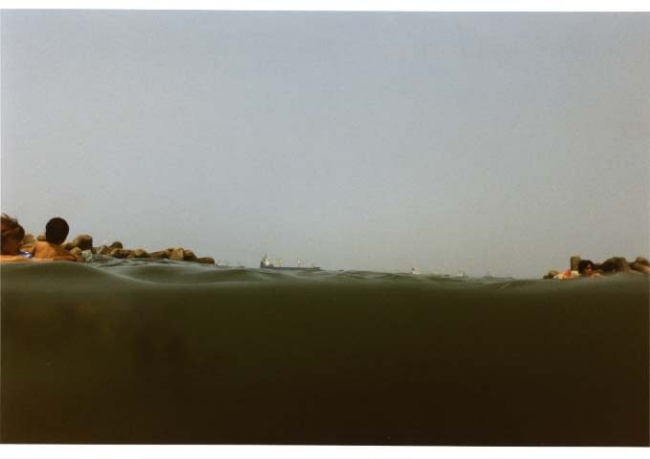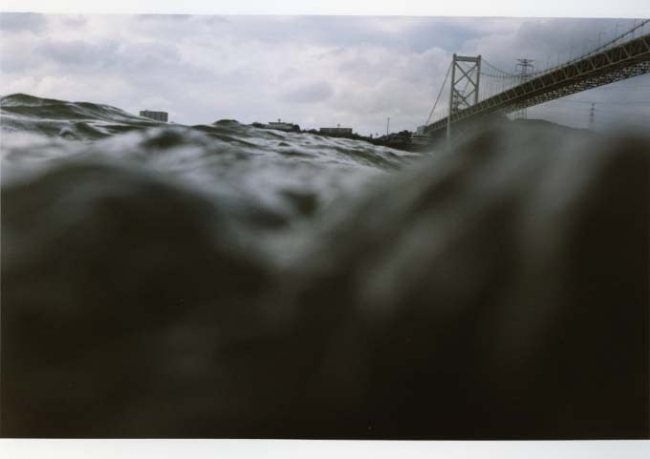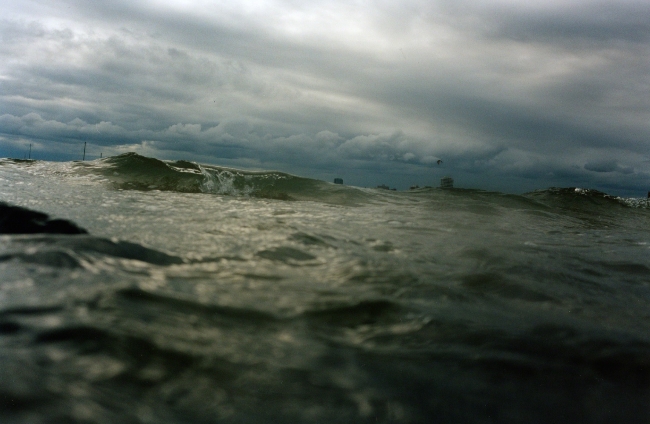We are the music-makers,
We are the dreamers of dreams,
Wandering by lone sea-breakers,
And sitting by desolate streams—
A few years ago I saw the photograph below. I don’t recall now where I saw it, and there was no attribution given. I had no idea who took it or under what circumstances. I assumed the mountain in the background was Fuji, but I wasn’t completely certain.
It stayed with me, that photograph. Fuji from the water during a snow shower. So striking, so unexpected, so entirely new—and yet somehow familiar. It seemed perfectly Japanese, a visual haiku. That’s a terrible cliché, I know, but this is one of those instances in which the cliché holds true. A couple of months ago I saw a similar photograph, which led me again to this one. And I learned the photographer’s name.
Asako Narahashi—a music-maker and a dreamer of dreams.

Narahashi was born in Tokyo in 1959. In the mid-80s she became a member of the photo sessions offered by Daido Moriyama, then later studied photography at Waseda University, a school whose motto is “independence in learning.” Her earliest work was fairly standard street photography, though there is some suggestion in her photographs that even then she was toying with strange relationships of distance.
One day in 2001 Narahashi went with some friends to visit the beach. As a child she’d often visited the sea with her parents in the summer, but it had been years since she’d spent any time by the ocean’s edge. “While I was swimming,” she told an interviewer, “I happened to see my friends…on the beach. That was the very beginning.” It was the beginning of a series of photographs she would eventually entitle half awake and half asleep in the water.
Not long after that day at the sea Narahashi bought a 35mm Nikonos waterproof camera. She began shooting photographs while bobbing in the sea, pointing the camera back toward shore. She quickly learned to adapt to photography on the surface of the sea. On land, obviously, the photographer has a stable platform. Below the water, the photographer is constrained by the pressure and motion of the sea, but that motion is moderated by the density of the water. Everything is different on the surface of the sea.
There is no stability. The sea can be choppy, especially when wind and current and tide are all in conflict. There can be long, slow, uniform swells which provide some degree of predictability, but breaking waves are weird. Waves can be of varying height and intensity. These are hardly ideal conditions for traditional photography.

Narahashi discovered she couldn’t rely on the viewfinder of her camera. She learned to orient herself generally toward the features she wanted in the frame—land mass, surface structures, people, things not of the sea—then to time the release of her shutter according to the whims of the sea. Serendipity and happenstance became an integral part of the process.
These are photographs of the sea, make no mistake—the sea and its relation to the things of the land. The sea is not only the medium in which she works, it’s the primary subject of the series. The sea is eternal; the people we see are just temporarily floating on the surface; the structures we see, no matter how large or solidly constructed, will eventually crumble; the aircraft flying over head will come down. The sea will always be there. It was there before us and it will be there after we’re gone.
Looking at Narahashi’s photographs (which, on display in galleries, are large: 35 by 53 inches) we are reminded that more than 70% of the surface of the Earth is covered by ocean. We are reminded that the ocean is constantly inconstant, fitful, chameleonic. Here the water is green and smooth, there the water is dark and choppy, another time and another place the water is blue and deceptively peaceful.
Most of all, Narahashi reminds us that water has weight. It has authority. It moves with power and impact. Water is a natural force, implacable and unstoppable. And she drops the viewer in it up to the neck.

“I am not a very good swimmer. And I am rather uncomfortable in the water. I cannot escape a sense of fear. Even if I decide that I want to take a photograph from [the water], there are times when I just can’t do it.”
We can feel that unease. Narahashi makes the viewer sense that there is nothing below us but more water, that we are bobbing perilously on the surface, that the water threatens to overcome us. Even though many of her photographs are hauntingly lovely (like the view of Mount Fuji), there is an underlying impression that we are lost at sea, that this may be our last hopeless glimpse of what we once believed was safety.
The title of the series, half awake and half asleep in the water, reflects the unreality of the imagery. There is a dreamlike quality to photographs in this series. There is a sense of contradiction. Despite the aura of foreboding that’s obvious in many of Narahashi’s photos—the awareness that we are so very vulnerable while floating on the surface of sea—there is , there is also the recognition that we are floating. We are floating, suspended between air and water, both weightless and aware of the inexorable pull of gravity. We’re floating between anxiety and pleasure.

And isn’t that part of the draw of the sea? It is a joy to be on the water, to feel the bob and weave of the waves, to feel buoyant, to experience the way a swell lifts us and carries us. And yet anybody who has ever spent any amount of time on the sea is aware how swiftly that delight can turn to apprehension. Nobody who knows the sea completely trusts it.
There is something primitive at work in Asako Narahashi’s half awake and half asleep on the water. It is elemental in the most basic and fundamental way—an imagery of elements, of water and air. I suspect much of the power of the series comes from the way it speaks to the primitive and elemental aspects of human nature. We came from the sea, after all. Perhaps this reminds us that some day we’ll return to it.
